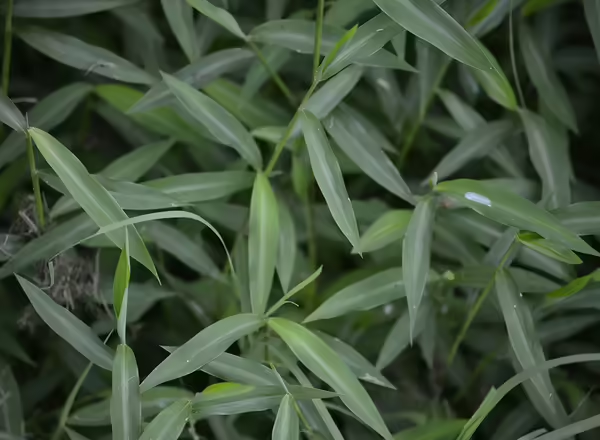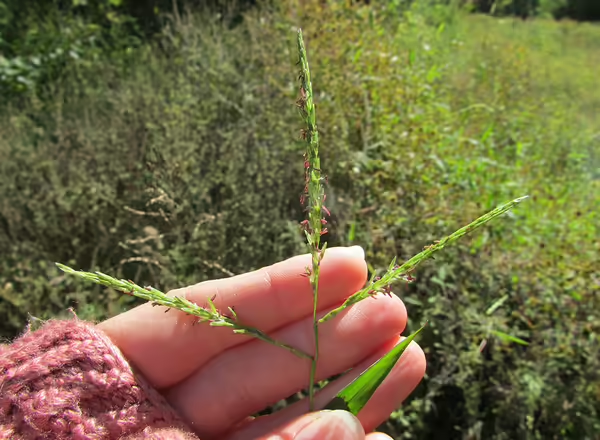
Invasive Stiltgrass
Stiltgrass (Microstegium vimineum) is an unusual grass that negatively impacts biodiversity, alters nutrient cycling and soil biota, and even changes fire behavior. It is a warm-season, annual grass that thrives in even the heavy shade of a forest understory. What that means for Stiltgrass is that, while it germinates early in the season, March in southern Illinois, it waits for the heat of mid-summer to put on most of its growth. It doesn't usually flower and set seed until late summer or early fall. Stiltgrass prefers moist bottomland soils and partial shade but can grow in a wide range of conditions, from dry rocky uplands to open fields and even deep shade.
Download the Field Guide to the Identification of Stiltgrass

Sometimes called browntop or packing grass, Stiltgrass is native to Asia and was introduced to the United States in the 1920s. Its introduction has been traced back to its use as a packing material for shipping porcelain products. It was first reported in southern Illinois counties in the late 1960s. It has been working its way north since and has been reported in 28 counties.
Stiltgrass is not currently regulated in Illinois.

Since Stiltgrass is an annual plant, it has a weak root system and pulls easily from the ground. A few of the roots arise from higher up on the stem. These aerial 'stilted' roots are clearly visible and give the plant its Stiltgrass name. The stems are thin and sprawling. The leaves are abundant and short: 3 to 4" long and 0.5 to 0.75" wide. A whitish or silver midrib is often visible on the leaves. Stiltgrass is often described as looking like a miniature bamboo. A few native grasses look somewhat like Stiltgrass, but have perennial root systems that do not pull out easily. Stiltgrass is even easily identified in winter as it leaves an abundance of straw-colored thatch on the forest floor.
A detailed guide to the identification of stiltgrass with comparisons to look-a-like species is available. The Illinois Nature Preserve Commission also has a Stiltgrass management guide.
Since Stiltgrass is an annual plant, successful management should focus on halting seed production. Small stands of Stiltgrass can be hand-pulled. Weed-whipping or mowing close to the ground just before flowering can reduce seed production. Herbicides, including grass-specific herbicides, have proven effective at control when applied before flowering. Pre-emergent herbicides are effective when applied in early spring before seed germination. Controlled burns late in the growing season have the potential to reduce seed production.
Regardless of management techniques, repeat treatments are needed to fully remove it. Stiltgrass seeds can live more than five years in the soil, though most of them germinate that first year.
Herbaceous invasive plants are a threat to forest health, productivity, and diversity. This webinar, presented by University of Illinois Extension Forester Chris Evans, explores how to identify common Illinois invasives, tools for controlling these invaders, and new species to keep an eye out...
Stiltgrass is still actively spreading throughout Illinois. The small seeds can easily be picked up in mud on tires, shoes, or even horse hooves. Cleaning these items and anything else that may carry soil and seeds is important, especially after leaving areas with known stiltgrass populations. Reporting new suspect populations of Stiltgrass can help biologist and managers track Stiltgrass and initiate management on new infestations early. Reports can be made through your local Extension office or through EDDMapS.